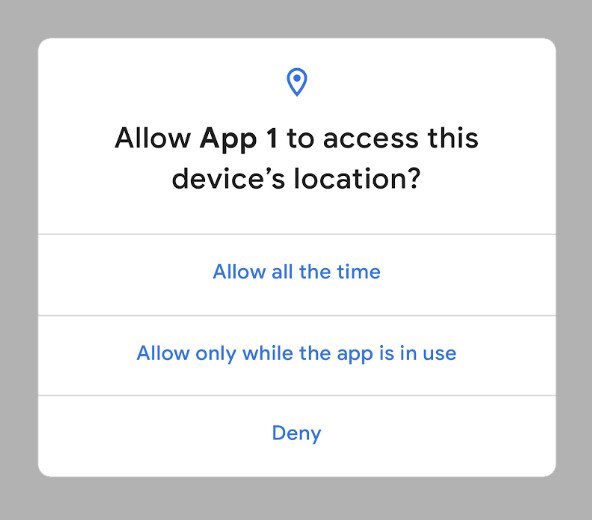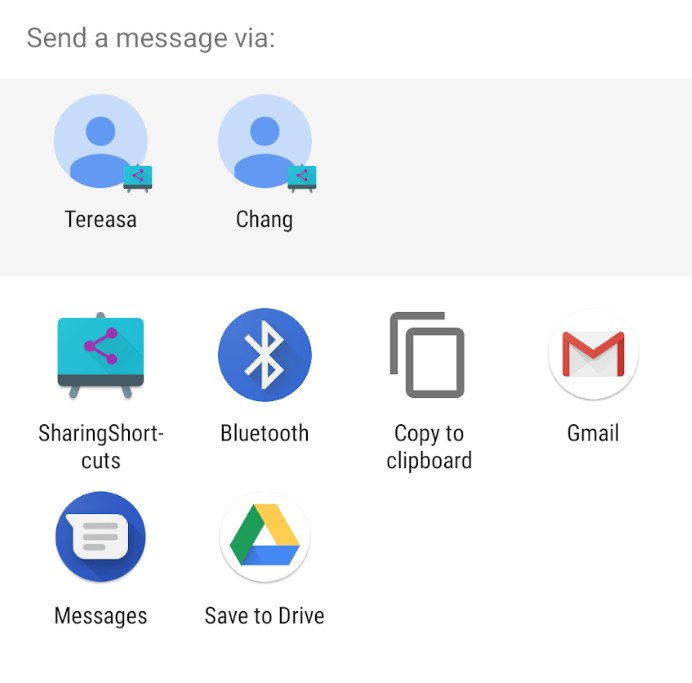Android has new features and a more mature name.
The next version of Android is here. It's chock-full of new features, has a renewed focus on privacy, and for the first time in Android history, doesn't have a tasty dessert name to accompany it. 😱
That's right. Android Q is officially called Android 10, and it's bringing a lot of goodies to go along with it.
Eager to learn more? Here's everything you need to know!
- Google is done with dessert names
- It's time to bid farewell to the back button
- DARK MODE IS OFFICIAL
- You'll find some new theming options
- Live Caption is an insanely cool feature
- App permissions have gotten an overhaul
- Check out the new share menu
- Foldable phones are natively supported
- Android 10 is rolling out now to Pixel devices
There's no dessert name — Android Q is just "Android 10"
For the last few months, there's been endless speculation regarding Android Q's name. Ever since Android 1.5 Cupcake, every version of Android has had a tasty dessert name to accompany it. With Android Q, however, things are changing.
Google is officially done with dessert names and is instead shifting to a simpler numerical naming scheme. As such, Android Q's official name is simply "Android 10."
Yes, it's a bit boring, but it's all part of a bigger rebrand Google has for Android as a whole.
For the first time since 2014, Google's refreshing the Android brand's look and feel, consisting of a redesigned logo that prominently features a green robot head. Whenever you see the Android logo text, you'll now also see that little robot.
While it's cool to see that Google is putting such a big focus on Android's robot friend, its head is the only part that's sticking around — the rest of its body is gone for good.
Android as an operating system is staying the same, but its image is changing quite drastically. The logo is cleaner and more playful while dessert names are done for and being replaced by numbers. To get a more in-depth look at what's going on here, be sure to check out both of Andrew's articles on this subject.
- Say goodbye to tasty treats: Q release is simply 'Android 10'
- Google redesigns Android brand for first time since 2014, bringing new colors and robot head
The iconic back button is gone
The back button, a navigation staple of Android, is officially going away with Android 10.
Following up on Pie's gesture-based navigation that kept the aging back button around, Android 10 now features a fully gesture-based method of navigation. Swiping up goes home, a swipe up and hold reveals the multitasking menu, and a swipe from the left or right edge of your screen goes back.
That's a pretty big shift for Android navigation, but if you aren't ready to commit to 100% gestures quite yet, you don't have to.
In addition to the new gesture navigation, Android 10 also allows you to switch back to Android Pie's two-button system and the traditional three-button array. It's unclear if these options will remain on devices like the Pixel 4 that ship with Android 10 out of the box, but at least for phones like the Pixel 3 and 3a that are updated to Android 10 from an older version, it's up to you as to what navigation system you use.
- How to enable the new gesture system in Android 10
- Android 10 gesture FAQ: Understanding how Android's new gestures work
There's finally a system-wide dark mode!
HOOOORRRAAYYYY!!!
After years of begging and praying, Android 10 ships with a system-wide dark theme that can be turned on and off at any time via a Quick Settings toggle.
Even better, Google also created a new API that developers can use to have their apps go to a dark theme as well when the system-wide one is turned on.
It'll likely take some time for all of your favorite apps to adopt the API, but right out of the gate, most Google apps and the main UI adhere to Android 10's wonderful dark mode.
New theming options
Being able to customize our phones to the fullest extent is one of the things that makes Android so great, and with Android 10, Google is (kind of) giving users even more ways to tinker with the look of their device.
Buried in the Developer Options of Android 10, there's a new Theming section where you can change your phone's accent color. The device default is the iconic Pixel blue, but you can change this to any of the following hues:
- Black
- Green
- Purple
- Cinnamon
- Ocean
- Space
- Orchid
In Beta 2, a new app appeared called "Pixel Themes." While not functional quite yet, it's possible this will be launched alongside the Pixel 4 later in the fall.
Live Caption transcribes media locally in real-time
Closed captions are crucial for deaf and hard-of-hearing people to understand what's being said in a video, podcast, game, or any other form of media where words are spoken, and to make sure these are available virtually everywhere, Android 10 comes with a feature called "Live Caption."
Live Caption is able to provide real-time captions for just about anything on your phone where someone is talking, and the best part is that it happens locally on-device. In other words, no internet connection of any kind is required.
You can turn Live Caption on through Android 10's accessibility settings, and for a lot of users, this is a godsend.
Big changes for permissions
Privacy is a bigger concern than ever before, and with Android 10, Google is implementing some new features for app permissions to help give you a better understanding and more control over what exactly apps on your phone have access to.
Apps that ask for your location now reveal a new pop-up asking you if you want to grant location access all the time, only when the app's being used, or not at all.
Furthermore, Google notes that Android 10:
Gives users even more control over apps, controlling access to shared files. Users will be able to control apps' access to the Photos and Videos or the Audio collections via new runtime permissions. For Downloads, apps must use the system file picker, which allows the user to decide which Download files the app can access.
The "Permissions usage" page in Settings has been completely overhauled to show which permissions are being used by how many of your apps, there's the option to filter by permissions to see which apps are using certain ones, and a new UI for the "App info" page.
An improved share menu
Android's share menu has been a hot mess for a while now. The core functionality is fine, but it's regularly slow to open no matter what phone you're using. Thankfully, Android 10 addresses this. In a blog post, Google noted that "the share UI can load instantly when it's launched" since the shortcuts are "published in advance."
Speaking of sharing, Android 10 also introduces something called "Sharing Shortcuts."
A Sharing Shortcut allows developers to create a new option in the share menu that will share a file/photo/etc. in a specific part of another app much faster than before.
Better support for foldable phones
2019 will be the year that foldable phones finally hit the market, and to ensure the experience of these new devices is as good as can be, Google's optimized Android 10 with foldable-specific features and experiences.
According to Google:
To help your apps to take advantage of these and other large-screen devices, we've made a number of improvements in Android Q, including changes to onResume and onPause to support multi-resume and notify your app when it has focus. We've also changed how the resizeableActivity manifest attribute works, to help you manage how your app is displayed on foldable and large screens.
These changes are obviously meant for developers, but in the end, it should result in Android 10 being optimized correctly for foldables of all shapes and sizes.
The update is rolling out now to Pixel devices
Following a public beta that started back in March and received six major updates, Android 10's final build was finally released to the masses on September 3, 2019.
As of that date, Android 10 began rolling out to Google's Pixel devices, including the newest Pixel 3a and going all the way back to the original Pixel that was released in 2016. You can wait for Android 10 to arrive via an OTA update, or if you're really impatient, manually download and install the update for yourself.
If you have a phone that isn't a Pixel, you'll need to wait a bit longer for OEMs to optimize Android 10 for their handsets.








Tidak ada komentar:
Posting Komentar